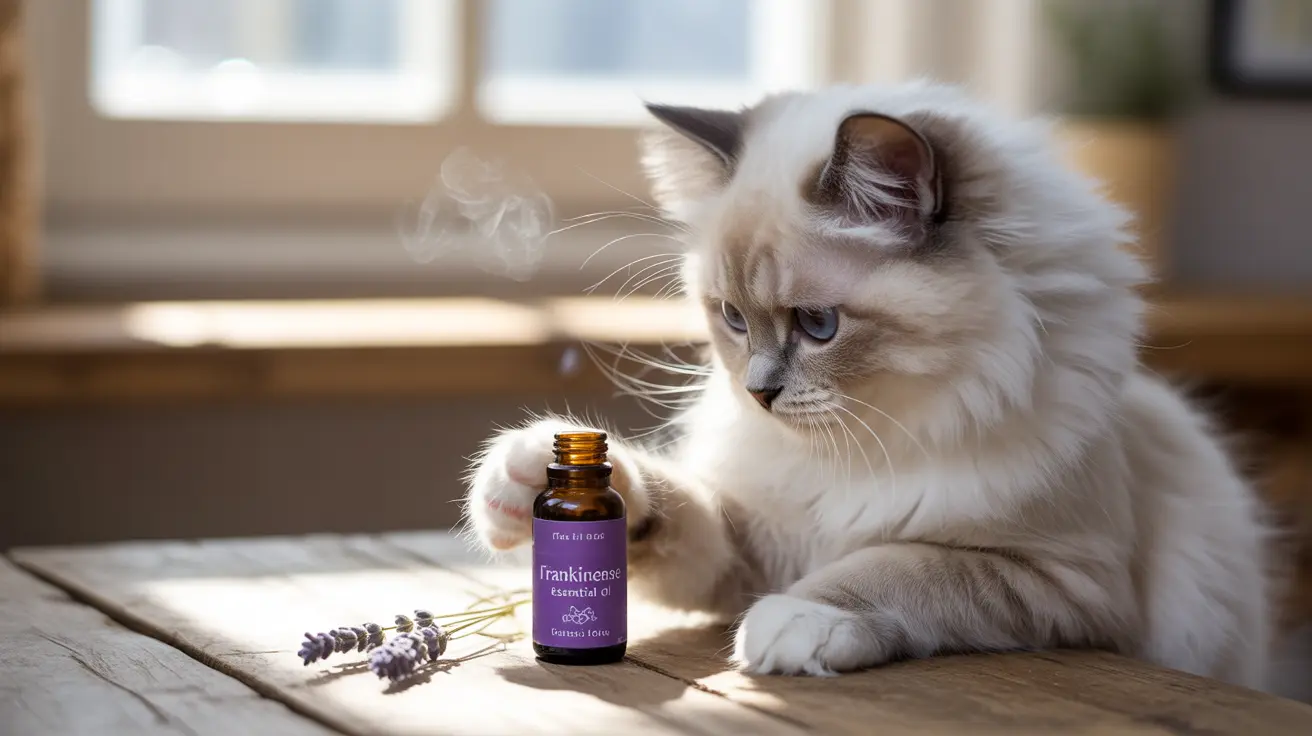Understanding Cats' Sensitivity to Essential Oils
Cats have a fundamentally different metabolic system compared to humans and even dogs. Their livers lack certain enzymes necessary to process various compounds found in essential oils, including frankincense. This biological difference makes them particularly vulnerable to essential oil toxicity.
The phenols and terpenes present in frankincense can be especially problematic for cats, as their bodies cannot effectively break down these substances. Even small amounts can potentially lead to serious health issues.
Safety Considerations for Frankincense Use
While frankincense is often considered one of the gentler essential oils, its use around cats requires extreme caution. The safest approach is to always consult with a veterinarian before introducing any essential oil into your cat's environment.
Proper Dilution Guidelines
If your veterinarian approves frankincense use, proper dilution is crucial. The generally recommended dilution is one drop of frankincense oil to at least 100 drops of carrier oil. However, even this diluted form should be used with extreme caution.
Safe Application Methods
Never apply frankincense oil directly to your cat's skin or allow them to ingest it. If using a diffuser, ensure the room is well-ventilated and your cat has the freedom to leave the area if desired.
Recognizing Signs of Essential Oil Toxicity
Watch for these warning signs that may indicate your cat is having an adverse reaction to frankincense:
- Drooling or excessive salivation
- Vomiting or diarrhea
- Difficulty breathing
- Lethargy or weakness
- Tremors or muscle spasms
- Unusual behavior changes
Alternative Safe Options for Cats
Instead of frankincense oil, consider these veterinarian-approved alternatives for supporting your cat's wellbeing:
- Frankincense hydrosol (flower water)
- Pet-specific calming products
- Veterinary-approved supplements
- Environmental enrichment techniques
Emergency Response Protocol
If you suspect your cat has been exposed to too much frankincense oil:
- Remove them from the area immediately
- Wash any oil from their fur with mild soap
- Contact your veterinarian or emergency animal hospital
- Monitor their behavior and vital signs
Frequently Asked Questions
Is frankincense safe to use around cats, and what precautions should I take?
Frankincense should be used with extreme caution around cats. Always consult a veterinarian first, ensure proper dilution, maintain good ventilation, and never apply directly to your cat or allow ingestion.
Can I apply frankincense oil topically to my cat to help with anxiety or pain?
Direct topical application of frankincense oil is not recommended for cats, even when diluted. Consult your veterinarian for safe, proven methods to address anxiety or pain in your cat.
What are the signs of frankincense toxicity in cats, and what should I do in an emergency?
Signs include drooling, vomiting, respiratory issues, tremors, and behavioral changes. If you notice these symptoms, remove your cat from exposure immediately and seek veterinary care.
How should I properly dilute frankincense oil if I want to use it safely near my cat?
The minimum safe dilution is 1 drop of frankincense to 100 drops of carrier oil. However, even this dilution should only be used under veterinary guidance and never applied directly to your cat.
Are there safer alternative essential oils or remedies for calming cats besides frankincense?
Yes, veterinary-approved alternatives include specially formulated pet calming products, pheromone diffusers, and behavioral modification techniques. Always consult your vet for safe options suited to your cat's specific needs.
Conclusion
While frankincense has its place in natural medicine, its use around cats requires significant caution and professional guidance. The safest approach is to work closely with your veterinarian to develop appropriate wellness strategies for your feline friend, using proven safe methods rather than experimenting with essential oils.






